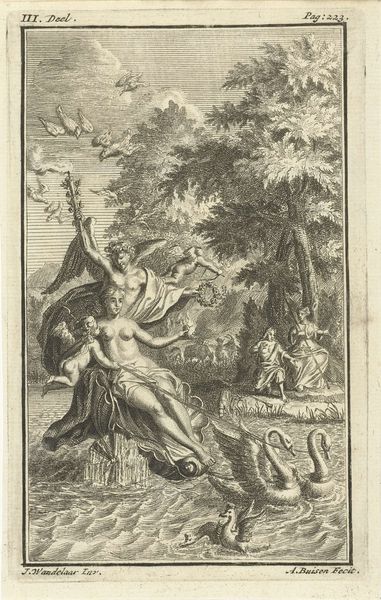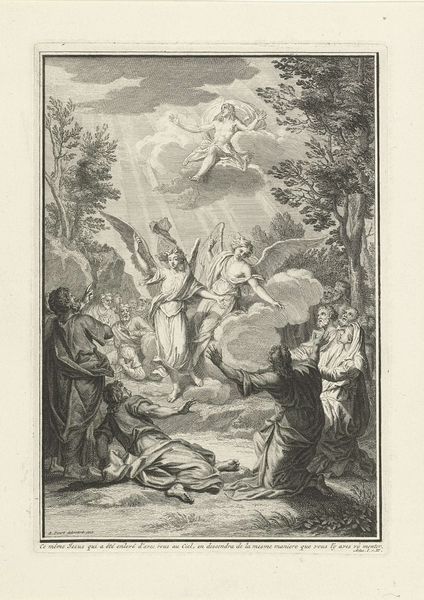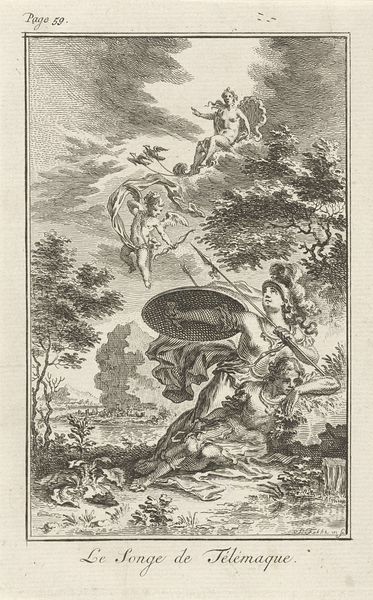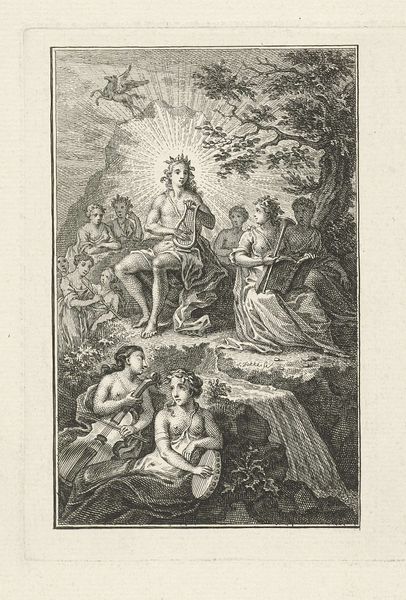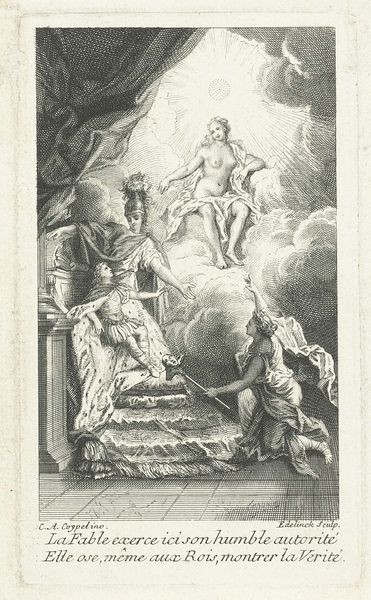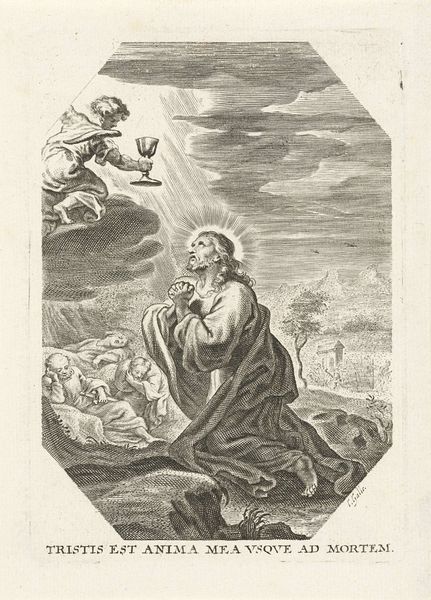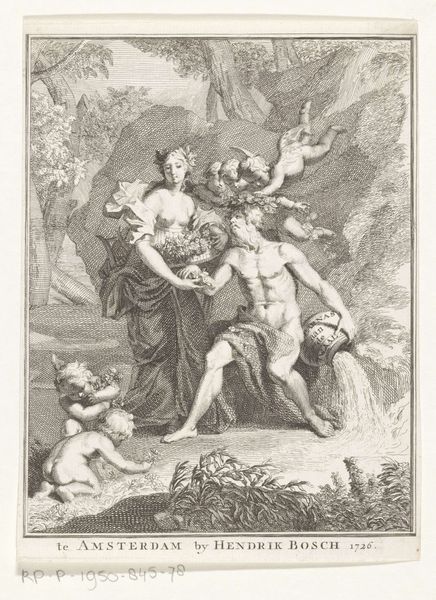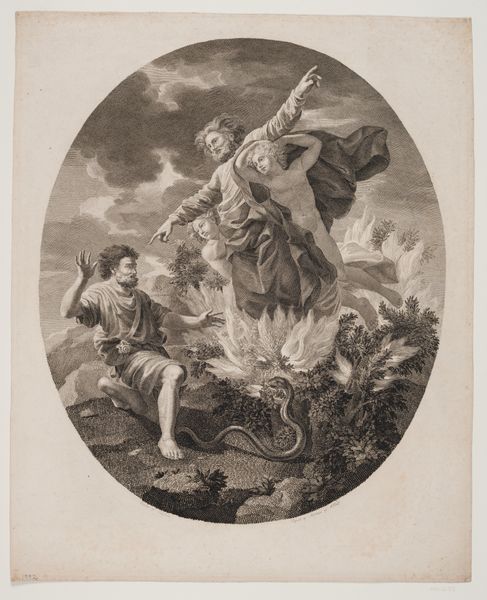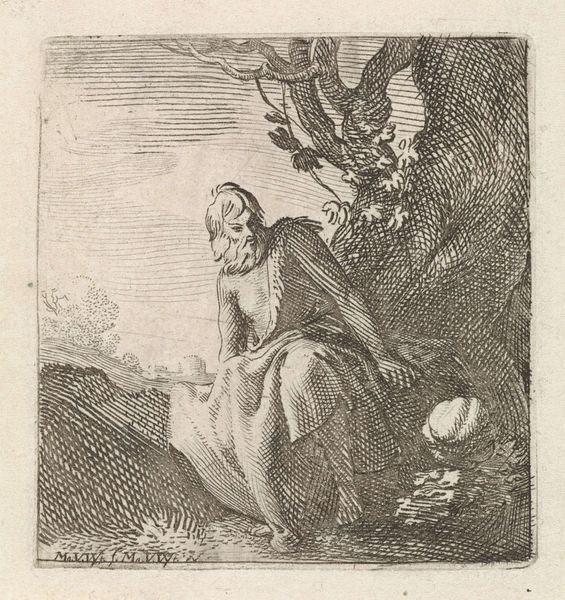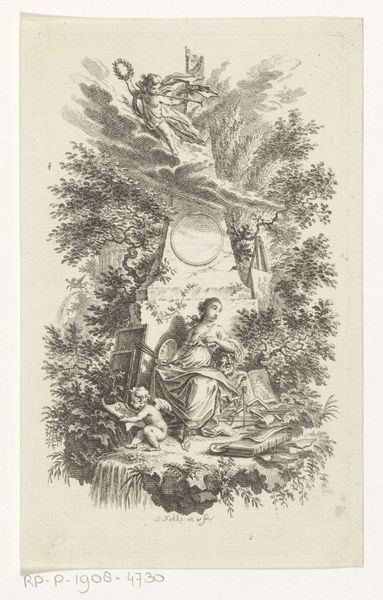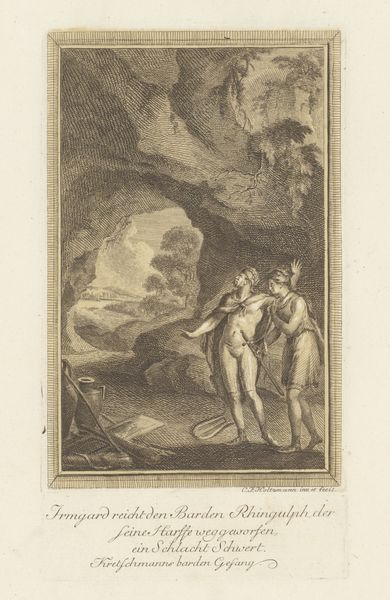
print, engraving
#
baroque
# print
#
greek-and-roman-art
#
old engraving style
#
landscape
#
figuration
#
history-painting
#
engraving
Dimensions: height 137 mm, width 90 mm
Copyright: Rijks Museum: Open Domain
Simon Fokke etched this print of Hercules playing the lyre in the 18th century. Here, the hero is depicted not in battle, but in repose, his mighty club and the skin of the Nemean Lion cast aside as he strums a tune. This juxtaposition of strength and music has echoes throughout art history. We see it in depictions of Apollo, the god of music and light, often shown with a lyre, a symbol of harmony and order. Yet, even earlier, we might recall the Mesopotamian hero Gilgamesh, whose strength was tempered by his friendship with Enkidu, a wild man tamed by music and civilization. The lyre itself speaks volumes. It's not merely an instrument, but a symbol of Apollonian order and harmony. Its strings resonate with the cosmos, each note a reflection of universal balance. This image evokes a deep-seated need to reconcile opposing forces: strength and gentleness, chaos and order, the earthly and the divine. Even the cherubic figure, perched on a rock, suggests a connection between earthly and celestial harmony. The continuous re-emergence of these symbols remind us of the cyclical nature of human experience.
Comments
No comments
Be the first to comment and join the conversation on the ultimate creative platform.
